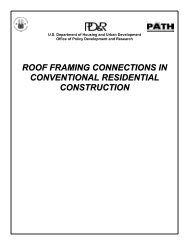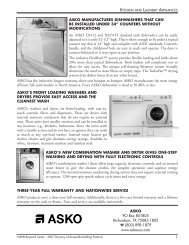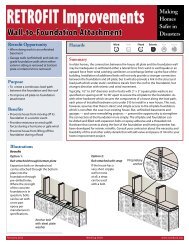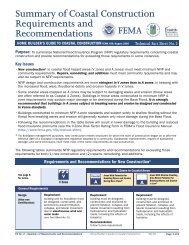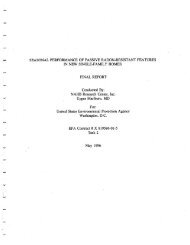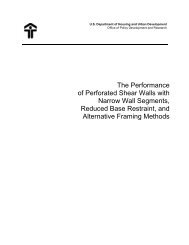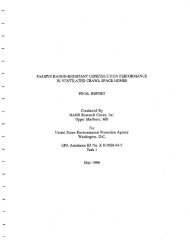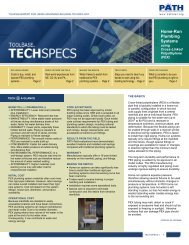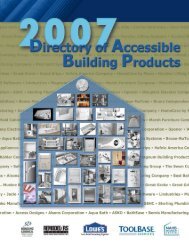Residential Construction Waste Management Demonstration and ...
Residential Construction Waste Management Demonstration and ...
Residential Construction Waste Management Demonstration and ...
Create successful ePaper yourself
Turn your PDF publications into a flip-book with our unique Google optimized e-Paper software.
Proactive versus reactive positioning. Firms are discovering that anticipating trends in<br />
environmental issues <strong>and</strong> policies can result in better working relationships with<br />
government agencies as well as in long-term savings in environmental compliance.<br />
Developing recycled-content building materials can be an important element of proactive<br />
positioning.<br />
"Take-back" policies. As firms investigate recycled-content building materials, some are<br />
finding that a take-back policy can create significant product distinction as well as<br />
mitigate some of the blending <strong>and</strong> contamination problems that affect recycling<br />
processes.<br />
Reinforce/reassure quality st<strong>and</strong>ards. In the past, recycled content has had some<br />
association with reduced product quality. Assuring consumers (builders, homeowners,<br />
<strong>and</strong> home buyers) that recycled-content products maintain st<strong>and</strong>ards of quality while<br />
achieving environmental responsibility is an essential part in the development of<br />
recycled-content products.<br />
Monitor relevant recycling markets. It is certainly not a given that recycled inputs are<br />
less expensive, more available, <strong>and</strong> in steadier supply than other inputs. However, the<br />
markets for both virgin <strong>and</strong> recovered material inputs are constantly <strong>and</strong> rapidly<br />
changing. Manufacturers should make it a point to keep abreast of recycling markets<br />
<strong>and</strong> their pricing structures <strong>and</strong> make it known to both brokers h<strong>and</strong>ling recycled<br />
materials <strong>and</strong> solid waste officials involved in the development of recycling markets that<br />
their company has an interest in recycled inputs.<br />
Packaging <strong>Waste</strong> Reduction<br />
Given that packaging waste represents a large <strong>and</strong> growing share of residential construction<br />
waste, packaging waste reduction can be cost-effective for both the manufacturer <strong>and</strong> builder.<br />
Correspondence with major building product manufacturers resulted in the following<br />
recommendations (This letter is included as Appendix D) 17:<br />
Engage a packaging engineer. Some manufacturers are hiring specialists in packaging design<br />
to optimize the use of materials in protecting their products.<br />
Perimeter packaging. Perimeter packaging replaces whole-box corrugated containers with edge<br />
<strong>and</strong> corner protection. Manufacturers that employ perimeter packaging can reduce total<br />
packaging waste <strong>and</strong> increase the visibility of their products at the same time.<br />
Use only highly recyclable packaging. To increase the likelihood that required packaging<br />
materials do not contribute to construction waste, manufacturers can avoid the use of difficult-torecycle<br />
mixed (cardboard <strong>and</strong> foam, for example) <strong>and</strong> composite packaging materials.<br />
17 All manufacturers received a follow-up telephone call to encourage company response <strong>and</strong> to increase the<br />
likelihood that appropriate company representatives reviewed the strategies.



